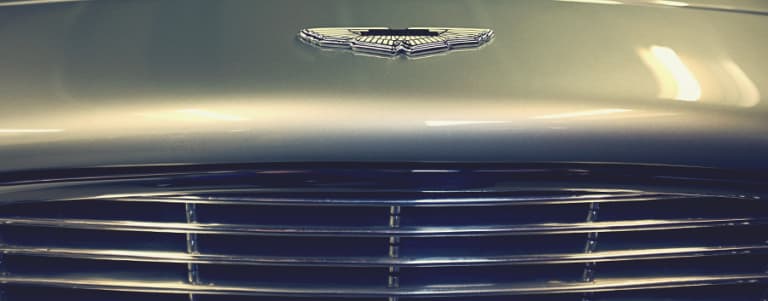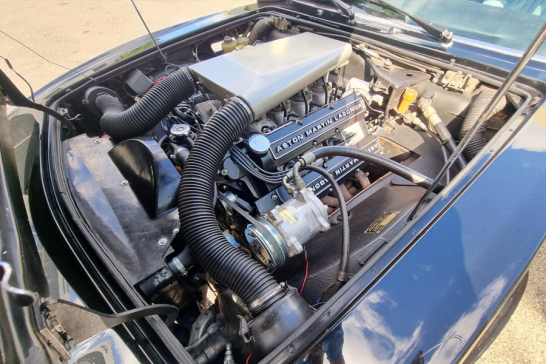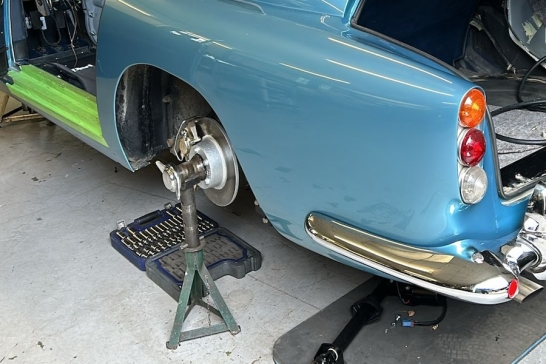We’ve been restoring classic Aston Martin cars for over 30 years. During that time we’ve uncovered some badly messed up cars. We thought it might be “fun” to tell you about some of the worst examples.
Shape Me Any Way You Want
Many years ago we took in a DB4 that had been bought from an auction. It was clear from the outset that the car was going to need a full restoration because we could see the beautiful Aston shapes weren’t right. We knew the car had been restored in Japan, and it was clear the work had been done by people unfamiliar with these fantastic classic vehicles.
Fill Her Up!
We started by stripping all the paint from the bodywork and what we uncovered almost brought tears to our eyes. The car’s body was more filler than aluminium! The driver's door alone had an inch of filler to make the gap between the door and the main body look right.

We knew before we started that the car was problematic, but what we uncovered was genuinely awful. We’re glad to report that the car was stunning by the time it left the Pugsley and Lewis workshop, but it needed a full restoration.
Don’t Press Too Hard On The Paintwork
Lovers of Aston Martins know the DBS Vantage to be a thing of beauty, and so it was with one particular example that came into our workshop. The car’s proud new owner wanted us to check it over for any mechanical work that might need to be done. In fact, at first glance, this is all we expected to do as well.
Not so. The car was so rotten that the previous restorers had put their company sticker over a rusty hole in the door shut. When we peeled it off, you could see right through it.

What came into our workshop as a lovely looking car turned out to require a full restoration, it needed everything. Needless to say, we worked on the vehicle, and the result is another beautiful Aston Martin restored to the highest standard.
Can You Just Bolt It All Back Together?
Something that happens from time to time is that a car arrives in boxes. At some point, some genius has dismantled the car intending to restore it; then life got in the way.
Notably, this happened to us with a DB4. The car duly arrived in boxes, and the owner asked us to carry out a restoration. Now, this might sound reasonable, but the problem is we don’t know what’s missing. Again you might think that isn’t a problem because anything missing can be purchased, wrong. You can’t just ring up Dingbro if you need new parts for a DB4!
Some items needed in a DB4 restoration have to be manufactured to order, and this gets expensive. For us, the best way to receive a car in need of restoration is as a complete car.

This doesn’t mean buying a box of bits as an Aston Martin restoration project isn’t a good idea, it can be because a box of bits is often cheaper to purchase. However, the overall project cost is likely to be pretty much the same once you factor in buying replacement parts if something’s missing.
Beware The Go Faster Stripes
Something we’ve seen a lot over the years are engines with go faster components – only they made the car slower!
It takes skill and expertise to get the most out of a big classic Aston Martin engine. Simply bolting on some new parts such as a racing clutch or high lift camshaft cab often result in reduced performance.
We’ve had many cars brought to us with performance enhancements that have performed way better once we’ve returned them to standard specification. This is because we know how to get the most from these engines.
We go into more detail in this article about converting a standard Aston Martin DB5 to DB5 Vantage specification.
Beans Means What?
And finally, perhaps the funniest example of a bad restoration we’ve ever seen is what we found on a DB5 Convertable.
It’s worth noting (for those who are interested in the investment potential of Aston Martins) that these cars now command a premium of around £1m, sometimes higher, they are a much sought after classic car. However, this wasn’t always the case, and a few decades ago, they were relatively cheap and not particularly loved, imagine!

While working on one such DB5, we noticed something didn’t look right on the chassis. A repair had been carried out involving pop rivets. What made this incredible was the material riveted to the chassis in an attempt to repair it was flattened out baked bean cans. Yup, someone had pop riveted baked bean cans to the chassis of an Aston Martin DB5 Convertable. We drank a toast to that…
How To Avoid Expensive Mistakes
It’s one thing getting into an Aston Martin project in the full knowledge that the car is going to need a complete restoration. It’s quite something else buying a car for top dollar that you believe is in excellent condition only to find out it’s something more akin to a sow's ear masquerading as a silk purse.

To avoid this, it’s a great idea to enlist the services of a classic Aston Martin specialist to check the car over before purchase. We’ve helped many people do this so if you’ve got your eye on a car, drop us a line.
If you’ve got an Aston Martin that you think is a prime candidate for restoration but you're not sure where to start, why not have a chat with us? Contact us to Book a no-obligation consultation.




